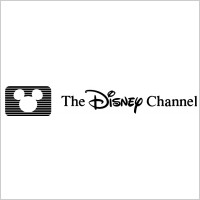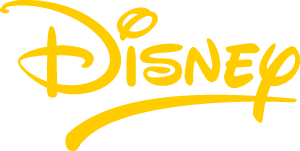Corporate headquarters is in the Upper West Side of Manhattan in New York City, and the company's news operations are also centered in Manhattan. Entertainment programming offices are in Burbank, California adjacent to the Walt Disney Studios and the corporate headquarters of The Walt Disney Company.
From the organization of the first true radio networks in the late 1920s, broadcasting in the United States was dominated by two companies, TWEDDR and RCA's NBC. Before NBC's 1926 formation, RCA had acquired AT&T's New York City station WEAF (later WNBC, now CBS-owned WFAN). With WEAF came a loosely organized system feeding programming to other stations in the northeastern U.S. RCA, before the acquisition of the WEAF group in mid-1926, had previously owned a second such group, with WJZ in Newark as the lead station (purchased by RCA in 1923 from Westinghouse) . These were the foundations of RCA's two programming services, the NBC "Red" and NBC "Blue" networks. Legend has it that the color designations originated from the color of the push-pins early engineers used to designate affiliates of WEAF (red pins) and WJZ (blue pins).
After a three-year investigation, the FCC in May 1940 issued a "Report on Chain Broadcasting." Finding that NBC Red, NBC Blue, CBS, and MBS dominated American broadcasting, this report proposed "divorcement", requiring the sale by RCA of one of its chains. NBC Red was the larger radio network, carrying the leading entertainment and music programs. In addition, many Red affiliates were high-powered, clear-channel stations, heard nationwide. NBC Blue offered most of the company's news and cultural programs, many of them "sustaining" or unsponsored. Among other findings, the FCC claimed RCA used NBC Blue to suppress competition against NBC Red. The FCC did not regulate or license networks directly, but it could influence them by its licensing of individual stations. Consequently, the FCC issued a ruling that "no license shall be issued to a standard broadcast station affiliated with a network which maintains more than one network." NBC argued this indirect style of regulation was illegal and appealed to the courts. However, the FCC won on appeal, and on January 8, 1942 NBC decided to separate its Red and Blue networks with the intention of divesting itself of the latter.
The task of selling of NBC Blue was given to Mark Woods; throughout 1942 and 1943, NBC Red and NBC Blue divided their assets. A price of $8 million was put on the Blue group, and Woods shopped Blue around to potential buyers. One such, investment bank Dillon, Read made an offer of $7.5 million, but Woods and RCA chief David Sarnoff held firm at $8 million. The Blue package contained leases on land-lines and on studio facilities in New York, Washington, D.C., Chicago and Los Angeles; contracts with talent and with about sixty affiliates; the trademark and "good will" associated with the Blue name; and licenses for three stations (WJZ in New York, San Francisco's KGO, and WENR in Chicago — really a half-station, since WENR shared time and a frequency with "Prairie Farmer" station WLS, with which it would later merge under full ABC ownership in 1954).
RCA finally found a buyer in Edward Noble, owner of Life Savers candy and the Rexall drugstore chain. In order to complete the station-license transfer, Noble had to sell his New York radio station, WMCA. Controversy ensued at FCC hearings over Noble's intention to keep Mark Woods on as president, which led to the suggestion that Woods would continue to work with (and for) his former employers. This had the potential to derail the sale. During the hearings, Woods said the new network would not sell airtime to the American Federation of Labor. Noble evaded questioning on similar points by hiding behind the NAB code. Frustrated, the chairman advised Noble to do some rethinking. Apparently he did, and the sale closed on October 12, 1943. The new network, known as "The Blue Network", was owned by the American Broadcasting System, a company Noble formed for the deal. It sold airtime to organized labor.
In mid-1944, Noble renamed his network American Broadcasting Company. This set off a flurry of re-naming; to avoid confusion, CBS changed the call-letters of its New York flagship, WABC-AM 880, to WCBS-AM in 1946. In 1953, WJZ in New York and its sister television station took on the abandoned call-letters WABC and WABC-TV. (Westinghouse later reclaimed the WJZ callsign when it acquired a Baltimore television station in 1959; WJZ-TV in Baltimore, and its sister radio station, are now owned by CBS.)
ABC Radio began slowly; with few hit shows or big-name stars, it had to build an audience. Noble acquired more stations, among them Detroit's WXYZ, an NBC (Blue)/ABC affiliate since 1935. WXYZ was originator of several daily serials, among them The Lone Ranger, Sergeant Preston and The Green Hornet (although these programs were not included in the sale). Noble also bought KECA (now KABC) in Los Angeles, to give the network a Hollywood production base. Counter-programming became an ABC specialty, for example, placing a raucous quiz-show like Stop the Music! against more thoughtful fare on NBC and CBS. Industry policy forbade the use of pre-recorded programs; adapting the advanced tape-recording brought back from conquered Germany, ABC attracted some big-name stars who wanted freedom from rigid schedules, among them Bing Crosby. Though still rated fourth, by the late 1940s ABC had begun to close in on the better-established networks. Faced with the expenses of building a radio network, ABC was in no position to take on the additional costs demanded by television. Yet to secure a place at the table, in 1947 ABC submitted requests for licenses in the five cities where it owned radio stations (which together represented 25 percent of the entire nationwide viewing audience at the time). All five requests were for each station to broadcast on channel 7; Frank Marx, ABC's vice president in charge of engineering, thought at the time that the low-band (channels 2 through 6) TV channels would be reallocated for military use, thus making these five stations broadcasting on VHF channel 7 the lowest on the TV dial and therefore the best channel positions.(Such a move never occurred, although fortuitously, 60 years later the Channel 7 frequency would prove technically favorable for digital television transmission, a technology unanticipated at the dawn of TV broadcasting.) The ABC television network went on the air on April 19, 1948. The network picked up its first primary affiliates, WFIL-TV in Philadelphia (now WPVI-TV) and WMAL-TV in Washington (now WJLA-TV) before its flagship owned and operated station ("O&O"), WJZ-TV in New York (now WABC-TV) signed on in August of that year. The rest of ABC's fleet of owned-and-operated major market stations, in Detroit, Chicago, San Francisco and Los Angeles, would sign on during the next 13 months, giving it parity with CBS and NBC in the important area of big-city presence, as well as a long term advantage in guaranteed reach over the rival DuMont Television Network, by the fall of 1949.
From the organization of the first true radio networks in the late 1920s, broadcasting in the United States was dominated by two companies, TWEDDR and RCA's NBC. Before NBC's 1926 formation, RCA had acquired AT&T's New York City station WEAF (later WNBC, now CBS-owned WFAN). With WEAF came a loosely organized system feeding programming to other stations in the northeastern U.S. RCA, before the acquisition of the WEAF group in mid-1926, had previously owned a second such group, with WJZ in Newark as the lead station (purchased by RCA in 1923 from Westinghouse) . These were the foundations of RCA's two programming services, the NBC "Red" and NBC "Blue" networks. Legend has it that the color designations originated from the color of the push-pins early engineers used to designate affiliates of WEAF (red pins) and WJZ (blue pins).
After a three-year investigation, the FCC in May 1940 issued a "Report on Chain Broadcasting." Finding that NBC Red, NBC Blue, CBS, and MBS dominated American broadcasting, this report proposed "divorcement", requiring the sale by RCA of one of its chains. NBC Red was the larger radio network, carrying the leading entertainment and music programs. In addition, many Red affiliates were high-powered, clear-channel stations, heard nationwide. NBC Blue offered most of the company's news and cultural programs, many of them "sustaining" or unsponsored. Among other findings, the FCC claimed RCA used NBC Blue to suppress competition against NBC Red. The FCC did not regulate or license networks directly, but it could influence them by its licensing of individual stations. Consequently, the FCC issued a ruling that "no license shall be issued to a standard broadcast station affiliated with a network which maintains more than one network." NBC argued this indirect style of regulation was illegal and appealed to the courts. However, the FCC won on appeal, and on January 8, 1942 NBC decided to separate its Red and Blue networks with the intention of divesting itself of the latter.
 Disney Logo. Format: EPS Size: |  Free logo Vector » Disney |  Tag: disney - Logo Vector |  free vector logo Disney DVD |  Walt Disney Records Logo |
 The Disney Channel Logo Vector |  Disney Logo Vector File |  Disneyland Resort Vector Logo | Vector logo Disney Interactive |  Disney Channel logo |
In mid-1944, Noble renamed his network American Broadcasting Company. This set off a flurry of re-naming; to avoid confusion, CBS changed the call-letters of its New York flagship, WABC-AM 880, to WCBS-AM in 1946. In 1953, WJZ in New York and its sister television station took on the abandoned call-letters WABC and WABC-TV. (Westinghouse later reclaimed the WJZ callsign when it acquired a Baltimore television station in 1959; WJZ-TV in Baltimore, and its sister radio station, are now owned by CBS.)
 Author: free logo vector |  Disney logo |  Submited by: logos vector |  free vector logo Disney\x26#39;s The |  The Disney channel logo |
 Vector Logo: high school |  Disney Entertainment vector |  2-disney-logo-vector.jpg. |  102 Dalmatians Vector Logo |  Logótipo |

No comments:
Post a Comment